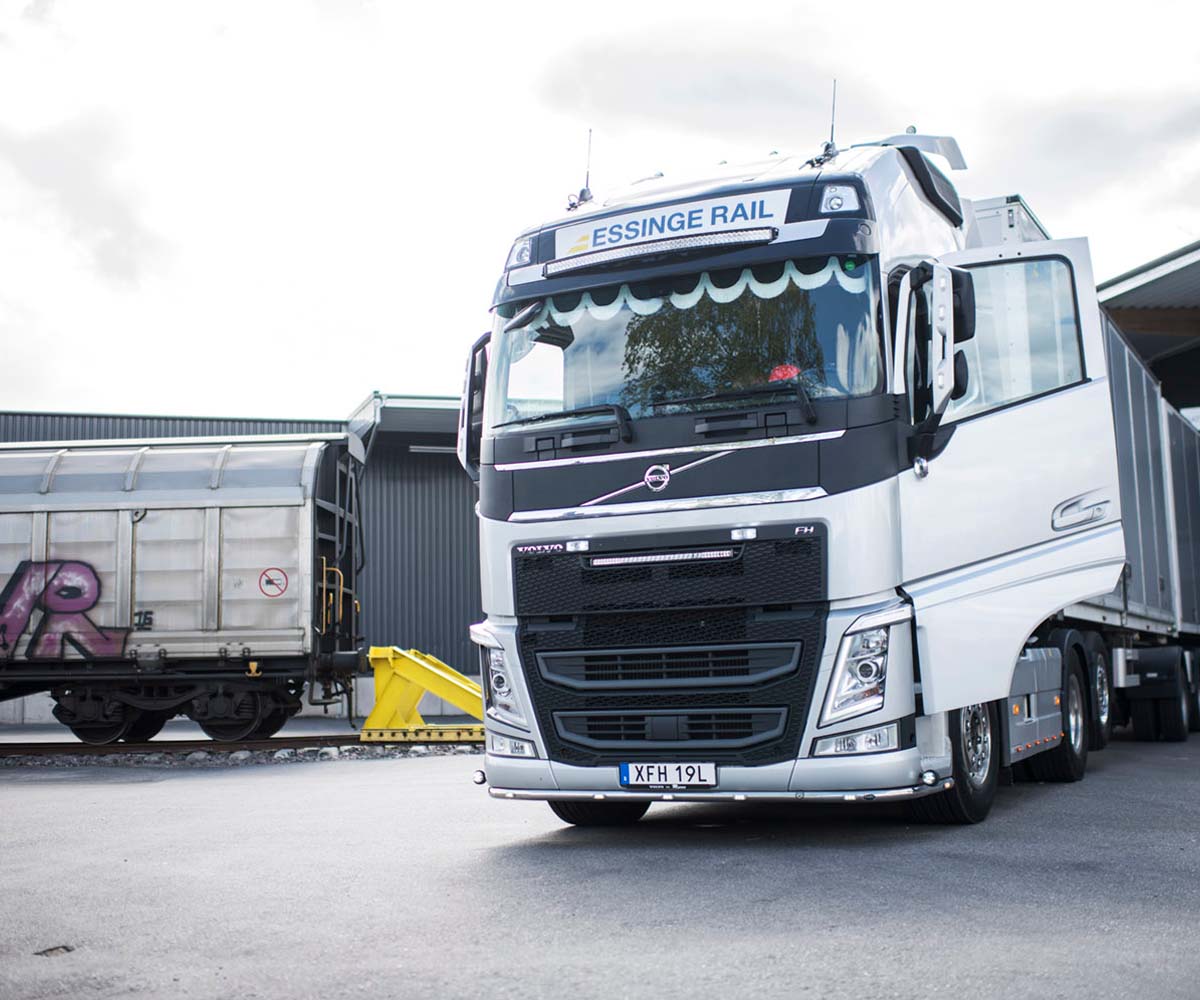Multimodal transport
What is multimodal transport?
Multimodal transport, or combined transport, involves the use of several different means of transport, at least two, to make the transportation of goods more efficient. Combined transport also basically means that a transport is carried out by a company that transports goods in one country and on to another. This method, which includes air, sea, rail and road transport, is designed to exploit the strengths of each mode of transport and reduce the weaknesses of logistics.
The description of multimodal transport from the United Nations Convention reads as follows:
"The carriage of goods by at least two different modes of transport on the basis of a multimodal transport contract from a place in one country at which the goods are taken in charge by the multimodal transport operator to a place designated for delivery situated in a different country"
Multimodal transport solutions and Sweden's climate policy goals
In its quest to become one of the world's first fossil-free welfare nations, Sweden has implemented ambitious climate targets that include a shift to more sustainable transportation methods. Combined transport solutions play a key role in this vision. This is because it offers an opportunity to significantly reduce greenhouse gas emissions, compared to traditional and unilateral transportation methods. The latter is also called intermodal transport. Statistics from the Swedish Transport Administration show that a shift to multimodal transport solutions can reduce emissions by up to 30% compared to conventional transport methods.


One single transport contract, several transport methods
This method means that you, as a customer, have a single contract with us as the carrier. This gives you less administration and only one contact person, who in turn handles all communication with subcontractors, customs, terminals and much more. Combined modes of transport use a combination of means of transportation such as sea, rail and road, sometimes even air. Each transport method is chosen based on its specific advantages. Examples include the suitability of shipping for heavy and bulky goods over long distances, or the efficiency and reliability of rail for land transportation, and the flexibility of trucks for shorter distances and final delivery.
The benefits of combined transport
Multimodal transport offers a range of benefits, including cost efficiency through reduced freight costs, reduced environmental impact through optimized fuel use and improved delivery reliability through diversified transport routes. When one company manages the entire transportation solution from start to finish, it tends to be an efficient solution, through reduced intermediaries and short decision-making paths, among other things. Our ability to deliver door-to-door between Sweden and Europe, and vice versa, is a result of long experience. This gives us detailed knowledge of the absolute best transport combinations for different goods, through different countries and under specific conditions that are different.
Rail versus truck in transport
Rail transport offers significant environmental benefits compared to truck transport, especially for longer distances. An NTM study shows that rail transport can reduce CO2 emissions by up to 75% compared to road transport. However, the integration of these methods in a multimodal approach brings not only environmental benefits, but also economic benefits, through increased efficiency and reduced transport costs. Despite the obvious environmental benefits of rail transport, we still need to use trucks to transport goods all the way to the door. But even here, there are new methods that reduce the environmental impact.
Sustainable truck transport with HVO100 diesel
HVO100, a synthetic diesel produced from renewable sources, such as vegetable oils and animal fats, offers a path towards more sustainable trucking. The use of HVO100 can reduce CO2 emissions by up to 90% compared to regular diesel, according to studies by the Swedish Petroleum and Biofuels Institute (SPBI). This makes HVO100 a very good alternative for the truck segment in multimodal transport. Essinge Rail's own haulage company runs all its trucks on HVO100 diesel.
Industries using multimodal transport solutions
A range of industries, such as manufacturing, forestry, agriculture, e-commerce and mining, have embraced multimodal transport to streamline their logistics. A combined transport solution offers these industries the opportunity to handle large volumes of goods, optimize delivery times and reduce logistics costs. Large companies with huge volumes of goods transported annually are constantly reviewing their logistics chain to make savings of time, money or environmental gains. By hiring a transport company like Essinge Rail, all these time-consuming activities can instead be carried out by an expert who can accurately tailor an optimal transport chain for your needs.
Specialized shipping that requires extra care
Certain types of freight, such as dangerous goods, oversized cargo and temperature-sensitive goods, require specialized knowledge and handling in multimodal transport. These goods require not only special transportation methods but also strict compliance with safety and regulatory standards. Something we have long experience of. Since we currently act as a transport provider for some of Sweden's and the Nordic region's largest companies in the food, retail and natural resources sectors, we have both the knowledge and the right resources in place to take care of your goods in the best possible way.
Digital administration and tracking
Technology has enabled efficient management and tracking of goods across different modes of transportation. We have our own systems for real-time monitoring of your cargo. This helps us to stay one step ahead and find solutions to any traffic jams and schedule possible diversions. Your transportation with Essinge Rail is transparent, efficient and modern. Our systems also enable more accurate forecasting, better risk management and improved customer service.
Best practices for the use of combined transport
To succeed in this type of transportation, companies themselves should, among other things:
- Engage in careful planning of different transportation methods
- Be flexible and able to adapt quickly to changing conditions.
- Using advanced tracking and communication technologies
- Building a large network of terminals and carriers
- Have a deep understanding of the regulations applicable to different countries and transport methods
And much more.
Contact Essinge Rail
Are you unable to get to grips with the many details and permits required for comprehensive and efficient multimodal transport? Would you prefer to hire an experienced company to take care of all of the above and more?
Then you can contact Essinge Rail. We will help you develop a customized and optimal logistics chain for your company.



